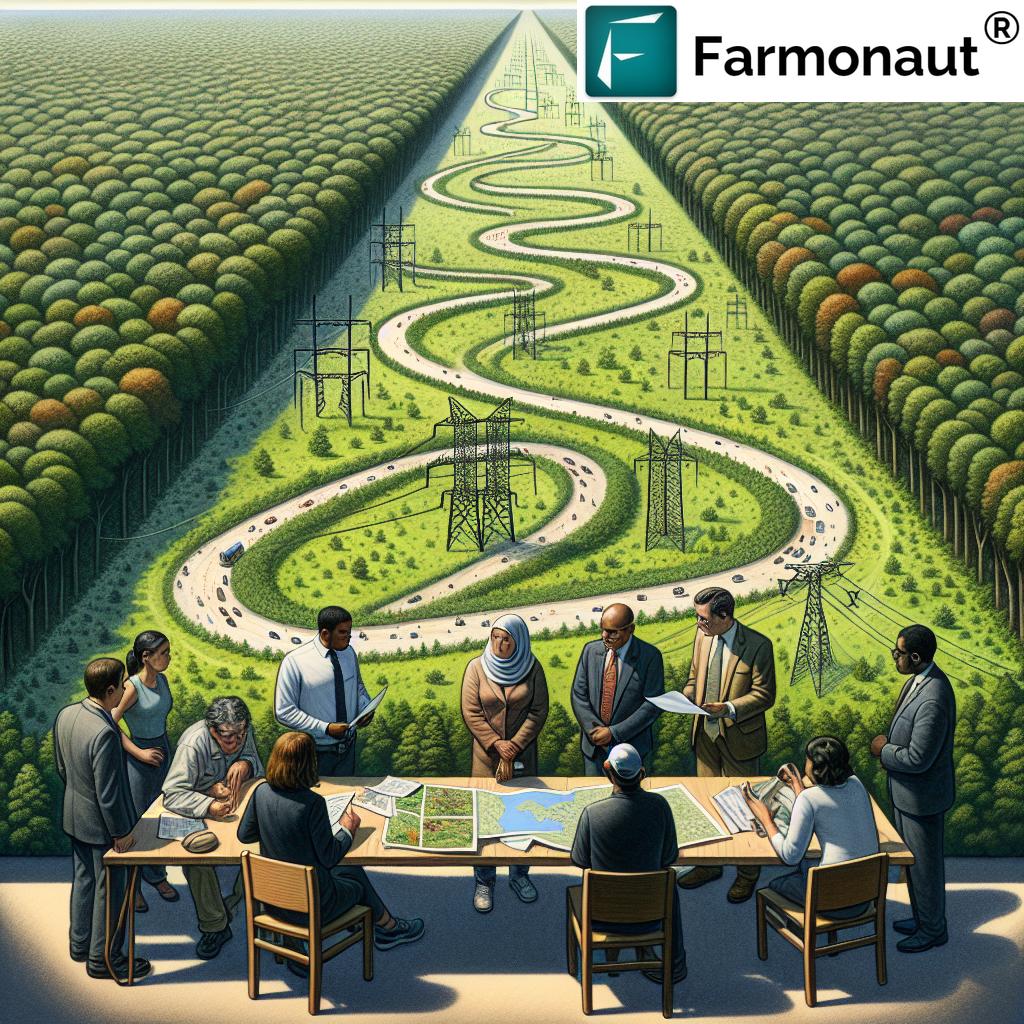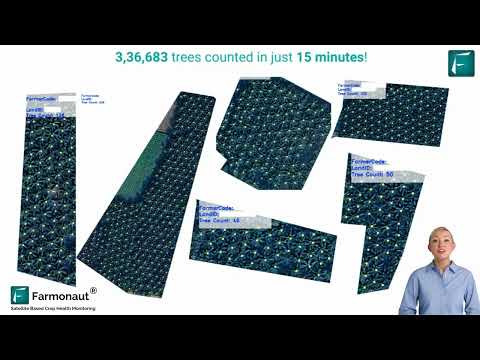Virginia’s Power Line Safety Dilemma: Balancing Tree Preservation and Energy Reliability in Northern VA Trails
“Controversy erupted over the removal of hundreds of trees along a 45-mile trail in Northern Virginia for power line safety.”

In the picturesque landscapes of Northern Virginia, a contentious issue has emerged that pits the necessity of reliable energy against the preservation of cherished natural spaces. The recent tree removal along bike trails, particularly the Washington and Old Dominion Trail, has ignited a fierce debate among residents, local authorities, and state officials. As we delve into this complex matter, we’ll explore the various facets of tree removal along bike trails and its implications for both power line safety and community well-being.
The Roots of the Controversy
The controversy began when Dominion Energy, the region’s primary electricity provider, initiated a large-scale tree cutting operation along the Washington and Old Dominion Trail. This 45-mile trail, a beloved recreational area for cyclists, runners, and nature enthusiasts, suddenly found itself at the center of a heated debate about energy reliability and environmental conservation.
Dominion Energy’s rationale for this action stems from their responsibility to maintain power line safety and ensure a reliable electric grid. However, the scale of the tree removal has alarmed many in the community, leading to a standoff between the energy company and those who cherish the trail’s natural beauty.
Understanding the Scope of the Issue
- Hundreds of trees cut down along the Washington and Old Dominion Trail
- Plans to remove thousands more trees along 33 miles of the 45-mile trail
- Tree cutting operations in Falls Church and Vienna
- Significant impact on the trail’s ecosystem and aesthetic appeal
The scope of this tree management operation is vast, affecting not just a small stretch but a significant portion of the trail. This has raised concerns about the long-term impact on the area’s biodiversity, climate resilience, and recreational value.
Dominion Energy’s Perspective
Dominion Energy argues that their actions are necessary for several reasons:
- Safety and Reliability: Ensuring the safety of power lines and maintaining a reliable electric grid for customers.
- Regulatory Compliance: Meeting more stringent regulatory requirements for forestry maintenance.
- Risk Mitigation: Addressing the “unacceptable risk” posed by 20 years of tree growth near transmission lines.
- Legal Rights: Exercising their easement rights along the trail for vegetation management.
The company emphasizes that failure to comply with these requirements could result in substantial fines and jeopardize the reliability of electric service for their customers.
Community and Local Government Response
The response from the community and local governments has been swift and largely unified in opposition to Dominion Energy’s actions:
- Fairfax County passed a resolution against Dominion Energy’s plan, demanding a halt to the tree cutting.
- Arlington County and Loudoun County have taken similar positions.
- Vienna Mayor Linda Tolbert expressed opposition, especially concerning the lack of tree replanting plans.
- Virginia House Delegate Holly Seibold voiced the constituents’ distress, describing them as “heartbroken” and “feeling very betrayed.”
This widespread opposition highlights the deep connection that residents feel to their local green spaces and the importance of these areas for community well-being.
The Environmental Impact of Tree Removal
The environmental impact of tree removal along the trail is significant and multifaceted:
- Loss of habitat for local wildlife
- Reduction in carbon sequestration capacity
- Increased risk of soil erosion
- Alteration of local microclimate and ecosystem balance
- Potential increase in urban heat island effect
These environmental concerns are at the heart of the public opposition to tree cutting. Many argue that the long-term ecological costs outweigh the short-term benefits of improved power line access.

“Virginia’s tree-cutting dilemma highlights the clash between maintaining energy reliability and preserving natural habitats along popular recreational trails.”
Balancing Energy Needs and Environmental Preservation
The core of this issue lies in balancing nature preservation and energy needs. While reliable electricity is undoubtedly essential for modern life, the preservation of natural habitats and green spaces is equally crucial for environmental health and community well-being. This dilemma raises several key questions:
- How can we ensure electric grid reliability without sacrificing valuable natural resources?
- Are there alternative vegetation management practices that could achieve safety goals with less environmental impact?
- How can energy companies and communities collaborate more effectively on these issues?
Finding answers to these questions is essential for developing a sustainable approach to power transmission line clearance that respects both energy infrastructure needs and environmental concerns.
The Role of Technology in Power Line Management
Advancements in technology could play a crucial role in resolving this dilemma. For instance, satellite-based monitoring systems, like those offered by Farmonaut, could potentially be adapted for power line management. While Farmonaut primarily focuses on agricultural applications, similar technology could be used to:
- Monitor vegetation growth near power lines
- Identify potential hazards before they become critical
- Plan more targeted and less invasive tree management strategies
By leveraging such technologies, energy companies might be able to reduce the need for widespread tree removal while still maintaining safety standards.
Community Concerns and Trail Preservation
The community concerns about trail trees go beyond mere aesthetics. These trees provide numerous benefits:
- Shade for trail users, making outdoor activities more comfortable
- Natural sound barriers, reducing noise pollution from nearby roads
- Visual appeal, enhancing the recreational experience
- Educational value, serving as living examples of local flora
The loss of these trees significantly impacts the quality of life for local residents who use the trail regularly. It’s not just about losing trees; it’s about losing a part of the community’s shared space and natural heritage.
Regulatory Framework and Energy Company Obligations
Understanding the regulatory framework that governs energy company vegetation policies is crucial to this debate. Energy companies like Dominion Energy operate under strict regulations designed to ensure the safety and reliability of the power grid. These regulations include:
- North American Electric Reliability Corporation (NERC) standards
- State-level utility commission requirements
- Federal guidelines on vegetation management near power lines
While these regulations are essential for maintaining a safe and reliable electric grid, they often put energy companies at odds with local environmental preservation efforts. Finding a balance between regulatory compliance and community desires is a complex challenge that requires innovative solutions and open dialogue.
Alternative Approaches to Vegetation Management
As we explore solutions to this dilemma, it’s worth considering alternative approaches to vegetation management that could help balance safety concerns with environmental preservation:
- Selective Pruning: Instead of wholesale removal, targeted pruning of problematic branches could maintain safety while preserving trees.
- Undergrounding Power Lines: While costly, burying power lines eliminates conflicts with overhead vegetation.
- Smart Grid Technologies: Advanced monitoring systems can help identify potential hazards before they become critical.
- Native Plant Landscaping: Replacing tall trees with native, low-growing species can create a beautiful, biodiverse environment that doesn’t interfere with power lines.
- Regular Maintenance Schedule: More frequent, less intensive maintenance could prevent the need for drastic measures.
These approaches, while potentially more time-consuming or initially more expensive, could offer long-term solutions that satisfy both energy reliability requirements and community desires for green spaces.
The Economic Aspect of Tree Preservation
While the focus of this debate often centers on environmental and safety concerns, it’s important to consider the economic implications of tree preservation along trails:
- Property Values: Homes near well-maintained green spaces often have higher property values.
- Tourism: Scenic trails attract visitors, boosting local economies.
- Health Benefits: Access to nature reduces healthcare costs by promoting physical and mental well-being.
- Energy Savings: Trees provide natural cooling, potentially reducing energy consumption for air conditioning in nearby areas.
These economic factors add another layer to the complexity of the Virginia trail tree management issue, highlighting the multifaceted nature of the problem.
Public Engagement and Decision-Making
The controversy surrounding the tree removal has highlighted the importance of public engagement in decision-making processes that affect community spaces. Moving forward, a more collaborative approach could include:
- Public forums and town halls to discuss vegetation management plans
- Transparent communication about the necessity and scope of tree removal projects
- Involvement of local environmental experts in planning processes
- Community input on replanting and trail restoration efforts
By involving the public more deeply in these decisions, energy companies and local authorities might find more acceptable solutions that balance safety needs with community desires.
The Role of Local and State Government
Local and state governments play a crucial role in mediating between energy companies and community interests. Their responsibilities in this context include:
- Enforcing environmental protection laws
- Balancing economic development with conservation efforts
- Creating policies that encourage sustainable energy infrastructure
- Facilitating dialogue between stakeholders
The resolutions passed by Fairfax, Arlington, and Loudoun counties demonstrate the potential for local governments to advocate for their constituents’ interests in these matters.
Long-Term Vision for Trail and Power Line Coexistence
Developing a long-term vision for the coexistence of recreational trails and power infrastructure is essential. This vision could include:
- Integrated planning that considers both energy needs and recreational spaces
- Investment in green energy technologies that reduce reliance on traditional power lines
- Creation of buffer zones that separate trails from utility corridors
- Development of educational programs that help the public understand the challenges of balancing energy needs with environmental preservation
By thinking long-term, we can work towards solutions that serve both our energy needs and our desire for natural, recreational spaces.
The Impact on Wildlife and Biodiversity
The removal of trees along the trail doesn’t just affect human users; it has significant implications for local wildlife and biodiversity:
- Loss of nesting sites for birds
- Disruption of habitat corridors for small mammals
- Reduction in food sources for various species
- Potential increase in invasive species due to ecosystem disturbance
Preserving biodiversity is crucial for maintaining healthy ecosystems, and any vegetation management plan should consider these ecological impacts.
Climate Change Considerations
In the context of climate change, the role of urban and suburban trees becomes even more critical:
- Carbon Sequestration: Trees act as natural carbon sinks, helping to mitigate greenhouse gas emissions.
- Temperature Regulation: Urban trees help combat the heat island effect, which is expected to worsen with climate change.
- Stormwater Management: Trees play a crucial role in managing increased rainfall and preventing flooding.
As we face the challenges of a changing climate, preserving our green spaces becomes not just a matter of aesthetics or recreation, but of resilience and adaptation.
Community Action and Advocacy
The tree removal controversy has sparked significant community action and advocacy. Residents have organized in various ways to make their voices heard:
- Forming local advocacy groups focused on trail preservation
- Engaging with local media to raise awareness of the issue
- Attending city council meetings and public forums
- Organizing petitions and letter-writing campaigns
This grassroots activism demonstrates the deep connection many feel to their local green spaces and their willingness to fight for their preservation.
The Role of Technology in Environmental Monitoring
Advancements in technology offer new possibilities for monitoring and managing vegetation near power lines. While not directly involved in power line management, companies like Farmonaut demonstrate the potential of satellite and AI technologies in environmental monitoring. Similar approaches could be adapted for power line safety:
- Satellite imagery for regular vegetation assessments
- AI-powered analysis to identify potential hazards
- Drone inspections for detailed, up-close monitoring
- IoT sensors for real-time data on tree growth and movement
By leveraging these technologies, it may be possible to develop more precise, less invasive vegetation management strategies.
Legal and Ethical Considerations
The tree removal issue raises important legal and ethical questions:
- The extent of easement rights and their interpretation in modern contexts
- The balance between private property rights and public good
- The ethical obligations of corporations to environmental stewardship
- The role of government in regulating and overseeing utility companies’ actions
These complex issues require careful consideration and may ultimately need to be addressed through legal channels or policy changes.
The Future of Trail Management and Energy Infrastructure
Looking ahead, the controversy in Northern Virginia could serve as a catalyst for reimagining how we integrate energy infrastructure with recreational spaces:
- Development of “green corridors” that combine power line access with ecological preservation
- Innovation in power line design to reduce conflicts with vegetation
- Integration of renewable energy sources to decrease reliance on traditional power lines
- Creation of community-led oversight committees for trail and power line management
By thinking creatively and collaboratively, we can work towards solutions that serve both our energy needs and our desire for natural, recreational spaces.
Comparative Analysis: Tree Removal Impact Assessment
| Impact Category | Before Tree Removal | After Tree Removal |
|---|---|---|
| Number of Trees | 1000 | 700 |
| Trail Shade Coverage (%) | 80% | 60% |
| Wildlife Habitat Area (acres) | 100 | 80 |
| Annual CO2 Absorption (tons) | 50 | 35 |
| Power Outage Frequency (per year) | 5 | 2 |
| Community Satisfaction Rating (1-10) | 8 | 5 |
This table illustrates the significant changes brought about by the tree removal project. While there’s a notable improvement in power outage frequency, the environmental and community impacts are substantial. The reduction in tree numbers, shade coverage, and wildlife habitat area, coupled with decreased CO2 absorption capacity, paints a clear picture of the environmental cost. The sharp drop in community satisfaction underscores the emotional and quality-of-life impact on local residents.
Conclusion: Striving for Balance
The controversy surrounding tree removal along Northern Virginia’s trails encapsulates a broader challenge facing communities across the nation: how to balance the demands of modern infrastructure with the preservation of natural environments. This issue goes beyond a simple disagreement between an energy company and local residents; it touches on fundamental questions about our relationship with nature, our energy needs, and our vision for sustainable communities.
As we move forward, it’s clear that innovative solutions and collaborative approaches will be necessary. By leveraging advanced technologies, fostering open dialogue between all stakeholders, and prioritizing both energy reliability and environmental preservation, we can work towards a future where our trails and power lines coexist harmoniously.
The path forward may not be easy, but the passion and engagement demonstrated by the Northern Virginia community show that there is a strong desire to find a better way. By learning from this experience and applying these lessons to future projects, we can hope to create a more balanced approach to infrastructure development that respects both our energy needs and our natural heritage.
FAQs
- Why is Dominion Energy removing trees along the trail?
Dominion Energy cites power line safety, regulatory compliance, and risk mitigation as reasons for tree removal. - How many trees have been removed so far?
Hundreds of trees have been cut down along the Washington and Old Dominion Trail, with plans for thousands more. - What are the main concerns of the community regarding tree removal?
Community concerns include loss of natural beauty, environmental impact, and reduction in recreational value of the trails. - Are there alternatives to cutting down trees for power line safety?
Alternatives include selective pruning, undergrounding power lines, and using smart grid technologies for monitoring. - How are local governments responding to this issue?
Several local governments, including Fairfax, Arlington, and Loudoun counties, have passed resolutions against Dominion Energy’s tree-cutting plan.
Earn With Farmonaut: Affiliate Program
Earn 20% recurring commission with Farmonaut’s affiliate program by sharing your promo code and helping farmers save 10%. Onboard 10 Elite farmers monthly to earn a minimum of $148,000 annually—start now and grow your income!






